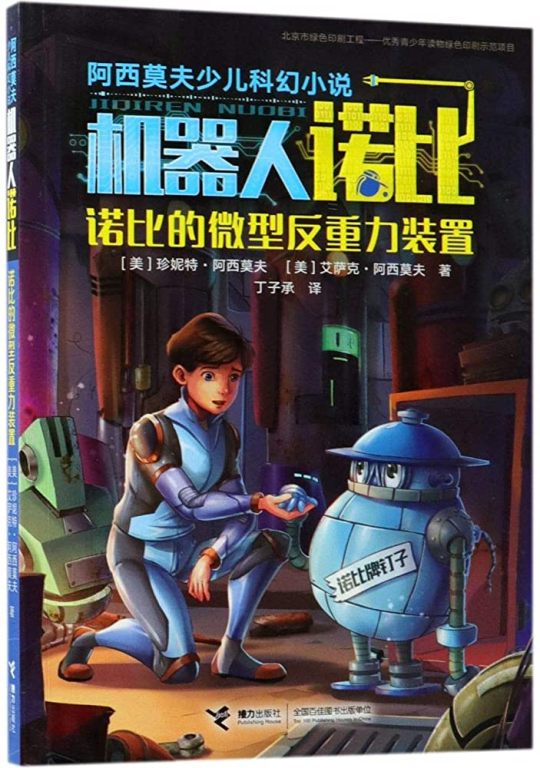#chinese cover
Text
youtube
Translated and sang the Wanpuri OP to Mandarin! Hope you enjoy!
#pretty cure#precure#プリキュア#fandub#光之美少女#中文翻唱#翻唱#Wonderful光之美少女#わんぷり#わんだふるぷりきゅあ!#わんだふるぷりきゅあ#Cover#Song Cover#Chinese Cover#Youtube
4 notes
·
View notes
Text
三体 - China

Set against the backdrop of China's Cultural Revolution, a secret military project sends signals into space to establish contact with aliens. An alien civilization on the brink of destruction captures the signal and plans to invade Earth. Meanwhile, on Earth, different camps start forming, planning to either welcome the superior beings and help them take over a world seen as corrupt, or to fight against the invasion.
#3 body problem#three body problem#science fiction#sci fi books#book covers#book cover#chinese cover#china
2 notes
·
View notes
Video
youtube
Hyukoh - Tian Mi Mi 甜蜜蜜 (Teresa Teng Cover)
One of my favorite covers to listen to. It gives me nostalgic vibes because my mom would play Teresa Teng songs so much around the house when I was growing up.
2 notes
·
View notes
Text
Fantasy Guide to Interiors



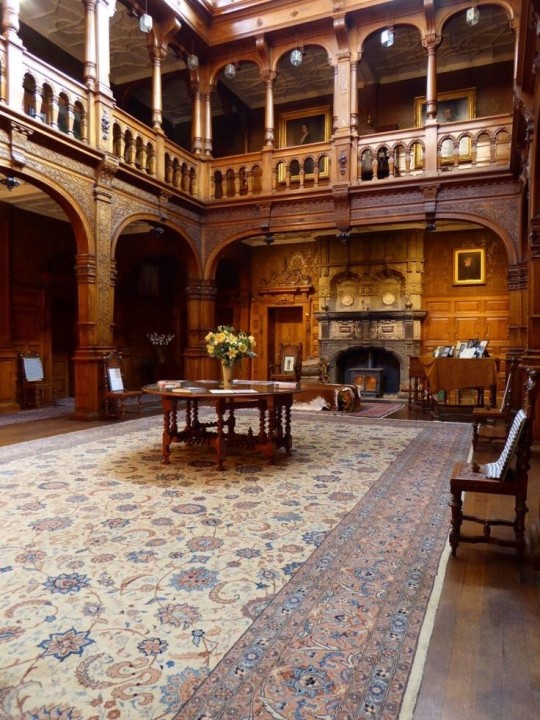
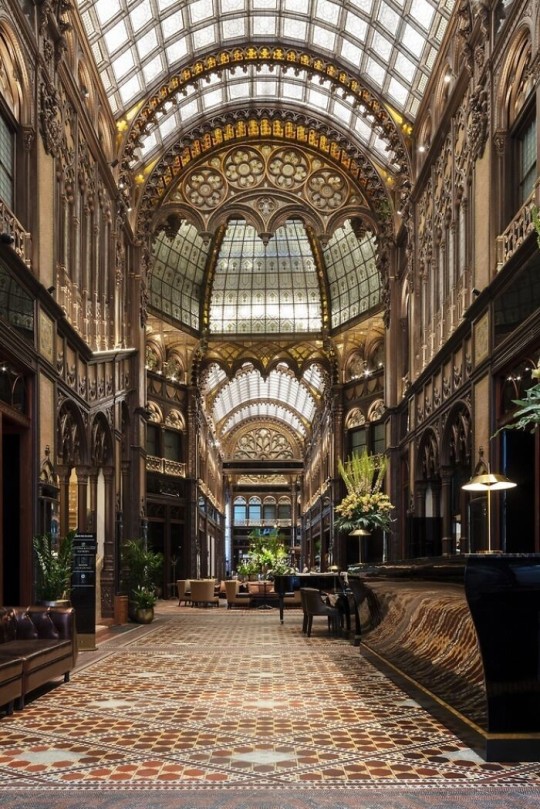
As a followup to the very popular post on architecture, I decided to add onto it by exploring the interior of each movement and the different design techniques and tastes of each era. This post at be helpful for historical fiction, fantasy or just a long read when you're bored.
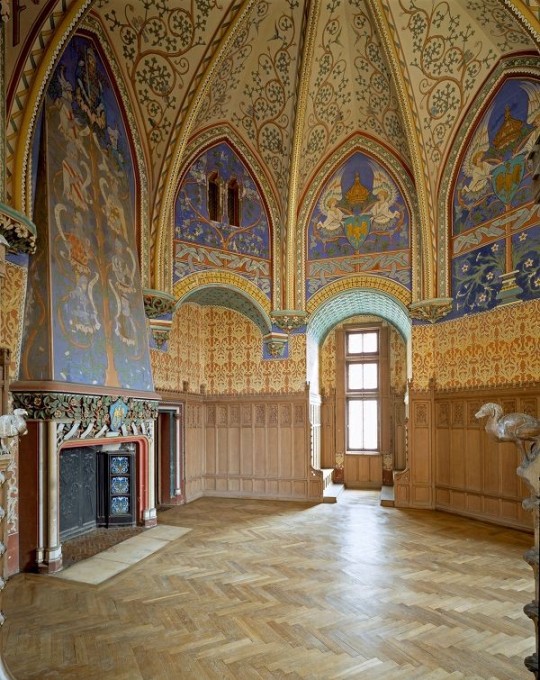


Interior Design Terms
Reeding and fluting: Fluting is a technique that consists a continuous pattern of concave grooves in a flat surface across a surface. Reeding is it's opposite.
Embossing: stamping, carving or moulding a symbol to make it stand out on a surface.
Paneling: Panels of carved wood or fabric a fixed to a wall in a continuous pattern.
Gilding: the use of gold to highlight features.
Glazed Tile: Ceramic or porcelain tiles coated with liquid coloured glass or enamel.
Column: A column is a pillar of stone or wood built to support a ceiling. We will see more of columns later on.
Bay Window: The Bay Window is a window projecting outward from a building.
Frescos: A design element of painting images upon wet plaster.
Mosaic: Mosaics are a design element that involves using pieces of coloured glass and fitted them together upon the floor or wall to form images.
Mouldings: ornate strips of carved wood along the top of a wall.
Wainscoting: paneling along the lower portion of a wall.
Chinoiserie: A European take on East Asian art. Usually seen in wallpaper.
Clerestory: A series of eye-level windows.
Sconces: A light fixture supported on a wall.
Niche: A sunken area within a wall.
Monochromatic: Focusing on a single colour within a scheme.
Ceiling rose: A moulding fashioned on the ceiling in the shape of a rose usually supporting a light fixture.
Baluster: the vertical bars of a railing.
Façade: front portion of a building
Lintel: Top of a door or window.
Portico: a covered structure over a door supported by columns
Eaves: the part of the roof overhanging from the building
Skirting: border around lower length of a wall
Ancient Greece
Houses were made of either sun-dried clay bricks or stone which were painted when they dried. Ground floors were decorated with coloured stones and tiles called Mosaics. Upper level floors were made from wood. Homes were furnished with tapestries and furniture, and in grand homes statues and grand altars would be found. Furniture was very skillfully crafted in Ancient Greece, much attention was paid to the carving and decoration of such things. Of course, Ancient Greece is ancient so I won't be going through all the movements but I will talk a little about columns.
Doric: Doric is the oldest of the orders and some argue it is the simplest. The columns of this style are set close together, without bases and carved with concave curves called flutes. The capitals (the top of the column) are plain often built with a curve at the base called an echinus and are topped by a square at the apex called an abacus. The entablature is marked by frieze of vertical channels/triglyphs. In between the channels would be detail of carved marble. The Parthenon in Athens is your best example of Doric architecture.
Ionic: The Ionic style was used for smaller buildings and the interiors. The columns had twin volutes, scroll-like designs on its capital. Between these scrolls, there was a carved curve known as an egg and in this style the entablature is much narrower and the frieze is thick with carvings. The example of Ionic Architecture is the Temple to Athena Nike at the Athens Acropolis.
Corinthian: The Corinthian style has some similarities with the Ionic order, the bases, entablature and columns almost the same but the capital is more ornate its base, column, and entablature, but its capital is far more ornate, commonly carved with depictions of acanthus leaves. The style was more slender than the others on this list, used less for bearing weight but more for decoration. Corinthian style can be found along the top levels of the Colosseum in Rome.
Tuscan: The Tuscan order shares much with the Doric order, but the columns are un-fluted and smooth. The entablature is far simpler, formed without triglyphs or guttae. The columns are capped with round capitals.
Composite: This style is mixed. It features the volutes of the Ionic order and the capitals of the Corinthian order. The volutes are larger in these columns and often more ornate. The column's capital is rather plain. for the capital, with no consistent differences to that above or below the capital.
Ancient Rome
Rome is well known for its outward architectural styles. However the Romans did know how to add that rizz to the interior. Ceilings were either vaulted or made from exploded beams that could be painted. The Romans were big into design. Moasics were a common interior sight, the use of little pieces of coloured glass or stone to create a larger image. Frescoes were used to add colour to the home, depicting mythical figures and beasts and also different textures such as stonework or brick. The Romans loved their furniture. Dining tables were low and the Romans ate on couches. Weaving was a popular pastime so there would be tapestries and wall hangings in the house. Rich households could even afford to import fine rugs from across the Empire. Glass was also a feature in Roman interior but windows were usually not paned as large panes were hard to make. Doors were usually treated with panels that were carved or in lain with bronze.
Ancient Egypt
Egypt was one of the first great civilisations, known for its immense and grand structures. Wealthy Egyptians had grand homes. The walls were painted or plastered usually with bright colours and hues. The Egyptians are cool because they mapped out their buildings in such a way to adhere to astrological movements meaning on special days if the calendar the temple or monuments were in the right place always. The columns of Egyptian where thicker, more bulbous and often had capitals shaped like bundles of papyrus reeds. Woven mats and tapestries were popular decor. Motifs from the river such as palms, papyrus and reeds were popular symbols used.
Ancient Africa
African Architecture is a very mixed bag and more structurally different and impressive than Hollywood would have you believe. Far beyond the common depictions of primitive buildings, the African nations were among the giants of their time in architecture, no style quite the same as the last but just as breathtaking.
Rwandan Architecture: The Rwandans commonly built of hardened clay with thatched roofs of dried grass or reeds. Mats of woven reeds carpeted the floors of royal abodes. These residences folded about a large public area known as a karubanda and were often so large that they became almost like a maze, connecting different chambers/huts of all kinds of uses be they residential or for other purposes.
Ashanti Architecture: The Ashanti style can be found in present day Ghana. The style incorporates walls of plaster formed of mud and designed with bright paint and buildings with a courtyard at the heart, not unlike another examples on this post. The Ashanti also formed their buildings of the favourite method of wattle and daub.
Nubian Architecture: Nubia, in modern day Ethiopia, was home to the Nubians who were one of the world's most impressive architects at the beginning of the architecture world and probably would be more talked about if it weren't for the Egyptians building monuments only up the road. The Nubians were famous for building the speos, tall tower-like spires carved of stone. The Nubians used a variety of materials and skills to build, for example wattle and daub and mudbrick. The Kingdom of Kush, the people who took over the Nubian Empire was a fan of Egyptian works even if they didn't like them very much. The Kushites began building pyramid-like structures such at the sight of Gebel Barkal
Japanese Interiors
Japenese interior design rests upon 7 principles. Kanso (簡素)- Simplicity, Fukinsei (不均整)- Asymmetry, Shizen (自然)- Natural, Shibumi (渋味) – Simple beauty, Yugen (幽玄)- subtle grace, Datsuzoku (脱俗) – freedom from habitual behaviour, Seijaku (静寂)- tranquillity.
Common features of Japanese Interior Design:
Shoji walls: these are the screens you think of when you think of the traditional Japanese homes. They are made of wooden frames, rice paper and used to partition
Tatami: Tatami mats are used within Japanese households to blanket the floors. They were made of rice straw and rush straw, laid down to cushion the floor.
Genkan: The Genkan was a sunken space between the front door and the rest of the house. This area is meant to separate the home from the outside and is where shoes are discarded before entering.
Japanese furniture: often lowest, close to the ground. These include tables and chairs but often tanked are replaced by zabuton, large cushions. Furniture is usually carved of wood in a minimalist design.
Nature: As both the Shinto and Buddhist beliefs are great influences upon architecture, there is a strong presence of nature with the architecture. Wood is used for this reason and natural light is prevalent with in the home. The orientation is meant to reflect the best view of the world.
Islamic World Interior
The Islamic world has one of the most beautiful and impressive interior design styles across the world. Colour and detail are absolute staples in the movement. Windows are usually not paned with glass but covered in ornate lattices known as jali. The jali give ventilation, light and privacy to the home. Islamic Interiors are ornate and colourful, using coloured ceramic tiles. The upper parts of walls and ceilings are usually flat decorated with arabesques (foliate ornamentation), while the lower wall areas were usually tiled. Features such as honeycombed ceilings, horseshoe arches, stalactite-fringed arches and stalactite vaults (Muqarnas) are prevalent among many famous Islamic buildings such as the Alhambra and the Blue Mosque.
Byzantine (330/395–1453 A. D)
The Byzantine Empire or Eastern Roman Empire was where eat met west, leading to a melting pot of different interior designs based on early Christian styles and Persian influences. Mosaics are probably what you think of when you think of the Byzantine Empire. Ivory was also a popular feature in the Interiors, with carved ivory or the use of it in inlay. The use of gold as a decorative feature usually by way of repoussé (decorating metals by hammering in the design from the backside of the metal). Fabrics from Persia, heavily embroidered and intricately woven along with silks from afar a field as China, would also be used to upholster furniture or be used as wall hangings. The Byzantines favoured natural light, usually from the use of copolas.
Indian Interiors
India is of course, the font of all intricate designs. India's history is sectioned into many eras but we will focus on a few to give you an idea of prevalent techniques and tastes.
The Gupta Empire (320 – 650 CE): The Gupta era was a time of stone carving. As impressive as the outside of these buildings are, the Interiors are just as amazing. Gupta era buildings featured many details such as ogee (circular or horseshoe arch), gavaksha/chandrashala (the motif centred these arches), ashlar masonry (built of squared stone blocks) with ceilings of plain, flat slabs of stone.
Delhi Sultanate (1206–1526): Another period of beautifully carved stone. The Delhi sultanate had influence from the Islamic world, with heavy uses of mosaics, brackets, intricate mouldings, columns and and hypostyle halls.
Mughal Empire (1526–1857): Stonework was also important on the Mughal Empire. Intricately carved stonework was seen in the pillars, low relief panels depicting nature images and jalis (marble screens). Stonework was also decorated in a stye known as pietra dura/parchin kari with inscriptions and geometric designs using colored stones to create images. Tilework was also popular during this period. Moasic tiles were cut and fitted together to create larger patters while cuerda seca tiles were coloured tiles outlined with black.
Chinese Interiors
Common features of Chinese Interiors
Use of Colours: Colour in Chinese Interior is usually vibrant and bold. Red and Black are are traditional colours, meant to bring luck, happiness, power, knowledge and stability to the household.
Latticework: Lattices are a staple in Chinese interiors most often seen on shutters, screens, doors of cabinets snf even traditional beds.
Lacquer: Multiple coats of lacquer are applied to furniture or cabinets (now walls) and then carved. The skill is called Diaoqi (雕漆).
Decorative Screens: Screens are used to partition off part of a room. They are usually of carved wood, pained with very intricate murals.
Shrines: Spaces were reserved on the home to honour ancestors, usually consisting of an altar where offerings could be made.
Of course, Chinese Interiors are not all the same through the different eras. While some details and techniques were interchangeable through different dynasties, usually a dynasty had a notable style or deviation. These aren't all the dynasties of course but a few interesting examples.
Song Dynasty (960–1279): The Song Dynasty is known for its stonework. Sculpture was an important part of Song Dynasty interior. It was in this period than brick and stone work became the most used material. The Song Dynasty was also known for its very intricate attention to detail, paintings, and used tiles.
Ming Dynasty(1368–1644): Ceilings were adorned with cloisons usually featuring yellow reed work. The floors would be of flagstones usually of deep tones, mostly black. The Ming Dynasty favoured richly coloured silk hangings, tapestries and furnishings. Furniture was usually carved of darker woods, arrayed in a certain way to bring peace to the dwelling.
Han Dynasty (206 BC-220 AD): Interior walls were plastered and painted to show important figures and scenes. Lacquer, though it was discovered earlier, came into greater prominence with better skill in this era.
Tang Dynasty (618–907) : The colour palette is restrained, reserved. But the Tang dynasty is not without it's beauty. Earthenware reached it's peak in this era, many homes would display fine examples as well. The Tang dynasty is famous for its upturned eaves, the ceilings supported by timber columns mounted with metal or stone bases. Glazed tiles were popular in this era, either a fixed to the roof or decorating a screen wall.
Romanesque (6th -11th century/12th)
Romanesque Architecture is a span between the end of Roman Empire to the Gothic style. Taking inspiration from the Roman and Byzantine Empires, the Romanesque period incorporates many of the styles. The most common details are carved floral and foliage symbols with the stonework of the Romanesque buildings. Cable mouldings or twisted rope-like carvings would have framed doorways. As per the name, Romansque Interiors relied heavily on its love and admiration for Rome. The Romanesque style uses geometric shapes as statements using curves, circles snf arches. The colours would be clean and warm, focusing on minimal ornamentation.
Gothic Architecture (12th Century - 16th Century)
The Gothic style is what you think of when you think of old European cathedrals and probably one of the beautiful of the styles on this list and one of most recognisable. The Gothic style is a dramatic, opposing sight and one of the easiest to describe. Decoration in this era became more ornate, stonework began to sport carving and modelling in a way it did not before. The ceilings moved away from barreled vaults to quadripartite and sexpartite vaulting. Columns slimmed as other supportive structures were invented. Intricate stained glass windows began their popularity here. In Gothic structures, everything is very symmetrical and even.
Mediaeval (500 AD to 1500)
Interiors of mediaeval homes are not quite as drab as Hollywood likes to make out. Building materials may be hidden by plaster in rich homes, sometimes even painted. Floors were either dirt strewn with rushes or flagstones in larger homes. Stonework was popular, especially around fireplaces. Grand homes would be decorated with intricate woodwork, carved heraldic beasts and wall hangings of fine fabrics.
Renaissance (late 1300s-1600s)
The Renaissance was a period of great artistry and splendor. The revival of old styles injected symmetry and colour into the homes. Frescoes were back. Painted mouldings adorned the ceilings and walls. Furniture became more ornate, fixed with luxurious upholstery and fine carvings. Caryatids (pillars in the shape of women), grotesques, Roman and Greek images were used to spruce up the place. Floors began to become more intricate, with coloured stone and marble. Modelled stucco, sgraffiti arabesques (made by cutting lines through a layer of plaster or stucco to reveal an underlayer), and fine wall painting were used in brilliant combinations in the early part of the 16th century.
Tudor Interior (1485-1603)
The Tudor period is a starkly unique style within England and very recognisable. Windows were fixed with lattice work, usually casement. Stained glass was also in in this period, usually depicting figures and heraldic beasts. Rooms would be panelled with wood or plastered. Walls would be adorned with tapestries or embroidered hangings. Windows and furniture would be furnished with fine fabrics such as brocade. Floors would typically be of wood, sometimes strewn with rush matting mixed with fresh herbs and flowers to freshen the room.
Baroque (1600 to 1750)
The Baroque period was a time for splendor and for splashing the cash. The interior of a baroque room was usually intricate, usually of a light palette, featuring a very high ceiling heavy with detail. Furniture would choke the room, ornately carved and stitched with very high quality fabrics. The rooms would be full of art not limited to just paintings but also sculptures of marble or bronze, large intricate mirrors, moldings along the walls which may be heavily gilded, chandeliers and detailed paneling.
Victorian (1837-1901)
We think of the interiors of Victorian homes as dowdy and dark but that isn't true. The Victorians favoured tapestries, intricate rugs, decorated wallpaper, exquisitely furniture, and surprisingly, bright colour. Dyes were more widely available to people of all stations and the Victorians did not want for colour. Patterns and details were usually nature inspired, usually floral or vines. Walls could also be painted to mimic a building material such as wood or marble and most likely painted in rich tones. The Victorians were suckers for furniture, preferring them grandly carved with fine fabric usually embroidered or buttoned. And they did not believe in minimalism. If you could fit another piece of furniture in a room, it was going in there. Floors were almost eclusively wood laid with the previously mentioned rugs. But the Victorians did enjoy tiled floors but restricted them to entrances. The Victorians were quite in touch with their green thumbs so expect a lot of flowers and greenery inside. with various elaborately decorated patterned rugs. And remember, the Victorians loved to display as much wealth as they could. Every shelf, cabinet, case and ledge would be chocked full of ornaments and antiques.
Edwardian/The Gilded Age/Belle Epoque (1880s-1914)
This period (I've lumped them together for simplicity) began to move away from the deep tones and ornate patterns of the Victorian period. Colour became more neutral. Nature still had a place in design. Stained glass began to become popular, especially on lampshades and light fixtures. Embossing started to gain popularity and tile work began to expand from the entrance halls to other parts of the house. Furniture began to move away from dark wood, some families favouring breathable woods like wicker. The rooms would be less cluttered.
Art Deco (1920s-1930s)
The 1920s was a time of buzz and change. Gone were the refined tastes of the pre-war era and now the wow factor was in. Walls were smoother, buildings were sharper and more jagged, doorways and windows were decorated with reeding and fluting. Pastels were in, as was the heavy use of black and white, along with gold. Mirrors and glass were in, injecting light into rooms. Gold, silver, steel and chrome were used in furnishings and decor. Geometric shapes were a favourite design choice. Again, high quality and bold fabrics were used such as animal skins or colourful velvet. It was all a rejection of the Art Noveau movement, away from nature focusing on the man made.
Modernism (1930 - 1965)
Modernism came after the Art Deco movement. Fuss and feathers were out the door and now, practicality was in. Materials used are shown as they are, wood is not painted, metal is not coated. Bright colours were acceptable but neutral palettes were favoured. Interiors were open and favoured large windows. Furniture was practical, for use rather than the ornamentation, featuring plain details of any and geometric shapes. Away from Art Deco, everything is straight, linear and streamlined.
#This took forever#I'm very tired#But enjoy#I covered as much as I could find#Fantasy Guide to interiors#interior design#Architecture#writings#writing resources#Writing reference#Writing advice#Writer's research#writing research#Writer's rescources#Writing help#Mediaeval#Renaissance#Chinese Interiors#Japanese Interiors#Indian interiors#writing#writeblr#writing reference#writing advice#writer#spilled words#writers
3K notes
·
View notes
Text
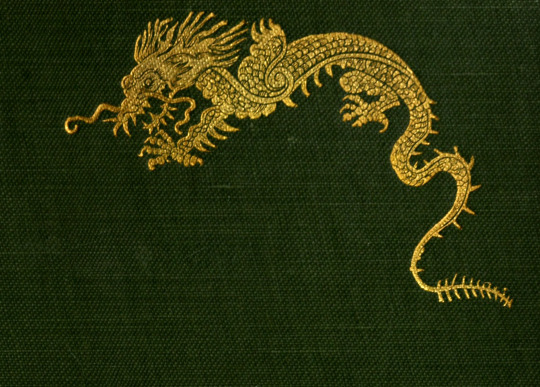
Chinese dragon. The passing of the dragon. 1913.
Internet Archive
471 notes
·
View notes
Text
A cover of 丹青客 by HITA/小曲兒 on guqin
260 notes
·
View notes
Photo



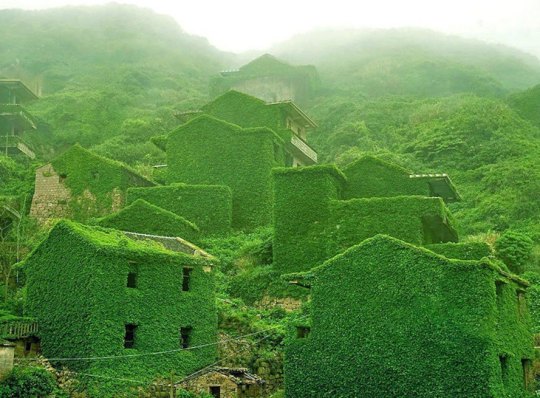
Gouqi island is located in the Shengsi archipelago of about 400 islands. Jane Qing captured the stunning images of this city of seemingly endless buildings, which were a part of a fishing village years ago. The region has a history of doing well, even today, in the fishing industry. Yet, this particular island seems to have been forgotten.
Each discovery of abandoned cityscapes is captivating, but one covered in beautiful ivy and greenery surely enchants in its own way.
~Shengsi Islands - Gouqi Island / Jane Qing Photography~
#abandoned island#Gouqi island#ghost city#Chinese ghost city#ghostly fishing village#forgotten city#memory of yesteryears#Shengsi archipelago#ivy-covered#reclaimed by nature#wow#eerie sights#architecture#travel#China#abandoned cityscapes#ivy
904 notes
·
View notes
Text
A fan dance
657 notes
·
View notes
Text
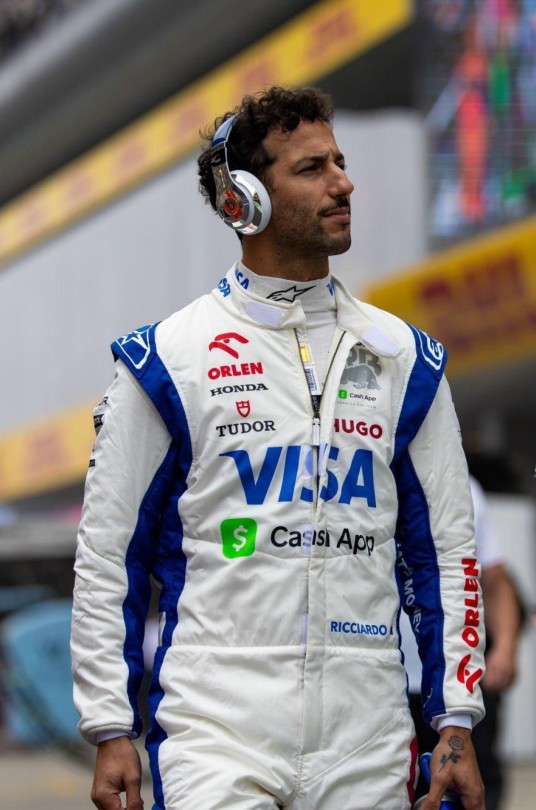
rose tattoo
Saturday | Shanghai | Kym Illman
#sorry but he looks unbelievably HOT in this photo#like i am begging him for a *** **** ****#also i love that we get to see the whole rose tattoo despite him being all covered up#daniel ricciardo#chinese gp 2024#visa cashapp rb#dr3#f1#formula 1
91 notes
·
View notes
Text
Honored to be cover, paperback and interior artist for Priest 烈火浇愁 Russian edition!

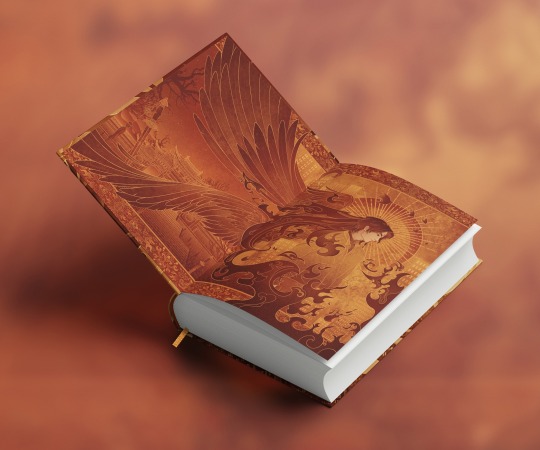



Volume 1
205 notes
·
View notes
Text
youtube
Full version of Hirogarism in Chinese translated and sung by me
我翻譯和唱了『Hirogarism』,中文版
#pretty cure#precure#プリキュア#ひろがるスカイ!プリキュア#hirogaru sky precure#hirogaru sky pretty cure#hirogaru sky! pretty cure#ひろプリ#光之美少女#fandub#開闊天空!光之美少女#soaring sky! pretty cure#cover#歌ってみた#翻唱#中文翻唱#chinese cover#Hirogarism#ヒロガリズム#Youtube
2 notes
·
View notes
Text
Nudge - China

0 notes
Text



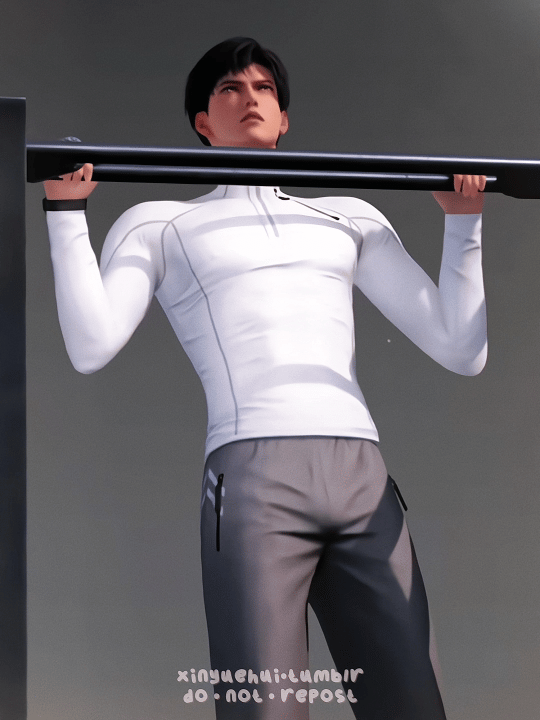
Quality Time New Feature ⛄ Love and Deepspace
#love and deepspace#恋与深空#love and deep space#黎深#li shen#zayne#dailyvideogames#gamingedit#dailygaming#3d animation#video games#*4#otome#otome game#paper games#chinese game#he's so covered up like it will tip all of us over like victorians when they see ankle if he ever showed anything#and then i read a comment that said “he's covered up because he doesnt want to show his scars” okay throw me in the fire 😭#i didnt zoom in on the 3rd gif it was in the video...im not sure if they want us to look up or down i only have 2 eyes i cant do this
84 notes
·
View notes
Text



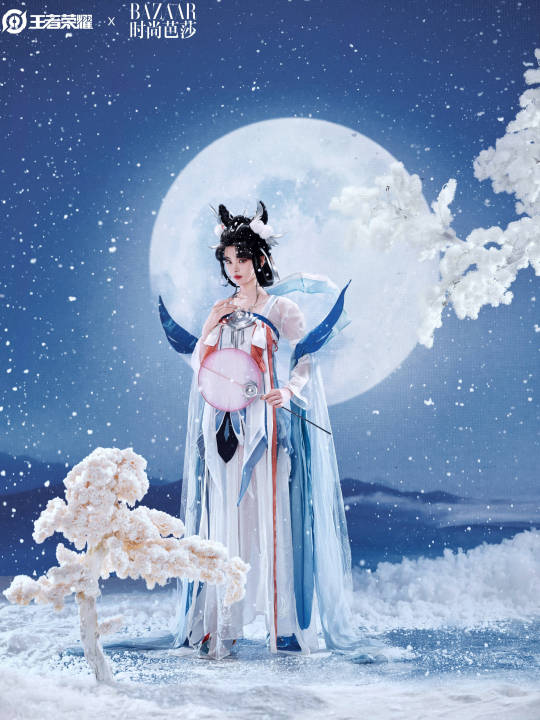
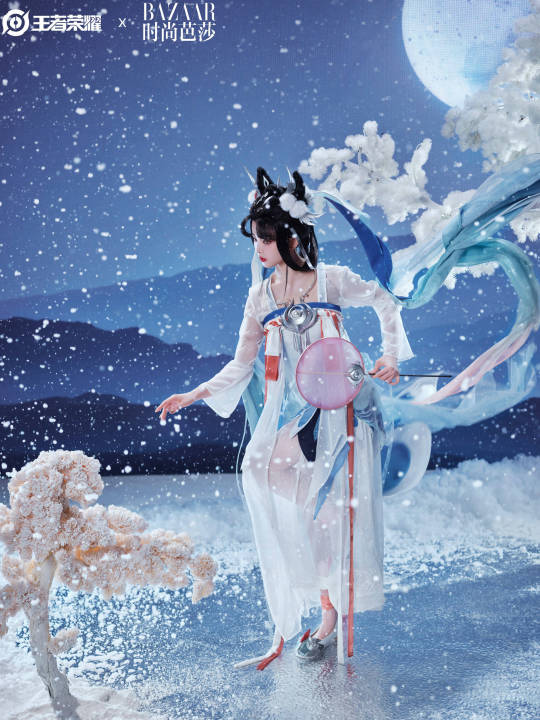




YANG CHAOYUE 杨超越 for Harper's Bazaar China x Honor of Kings | February 2024
Yang Chaoyue: more photos here
Harper's Bazaar China: more photos here
hanfu photoshoot: more photos here
brand photoshoot: more photos here
#yang chaoyue#杨超越#chinese actress#chinese fashion#fashion#magazine shoot#magazine cover#magazine#fashion editorial#editorial#Harper's Bazaar#harper's bazaar#Harper's Bazaar China#harper's bazaar magazine#honor of kings#brand photoshoot#hanfu#hanfu photoshoot#chinese hanfu#hanfu girl#hanfu fashion#blue hanfu#cnladies
122 notes
·
View notes
Text
li xiangyi, yin, and femininity
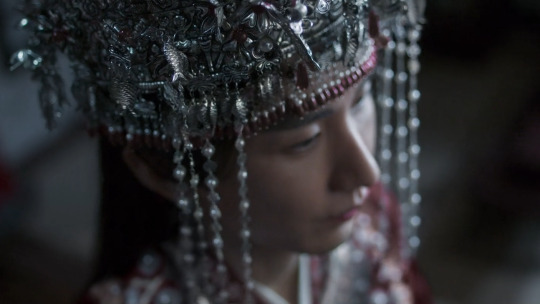
we all know that li xiangyi is a character of fractured identities. and li lianhua is an unreliable narrator to his own story. these make him not the most straightforward character to study. but I've believed in treating li lianhua as a part of li xiangyi, rather than separates. and there must be a common thread that ties all of him together. thus, I offer what I have found to be the most useful lens to use to view him as a cohesive whole, regardless as li xiangyi, li lianhua, or any other identity he may reinvent into: his 阴 yin qualities. (yin of yinyang)
this framework suggested by the drama's text itself has helped clarify to me his strengths, weaknesses, motivations, and struggles. by identifying this constant, too, makes it so much easier talking about what has changed in him.
[to the, hopefully growing, boli lhl hivemind @markiafc @ananeiah]
-
there are some notes on the concept of yinyang and chinese conceptualisation of gender I have to preface with.
[disclaimer: of course, I'm not even trying to cover a tip of what experts have extensively studied and debated in a depth it deserves. all I'm doing is try to parse the broad, fundamental ideas that are needed to explain my blorbos through my own spotty brain filter. so there bound to be nuances I've overlooked or some degree of my own interpretation. pretentious but needs to be done.]
阴 yin and 阳 yang are concepts characterised by passiveness, darkness, gentleness, femininity etc, and proactivity, light, toughness, masculinity etc respectively. a very key and handy concept to have in mind is their relationship to each other - which I'll not attempt at explaining better than literal scholars have:
Yin and yang exist only in relation to one another internally as the way warmth-coldness only exist relative to one another. Furthermore, when using yin-yang as an organizational schema, achieving balancing harmony is always the goal, not domination nor subordination of one to the other. [x]
while yin and yang can be symbols of femininity and masculinity, it doesn't mean all female are yin and all male are yang. it's certainly not a strict 1-to-1 equation. the concept of gender in chinese context is more social than biological. this suggests room for fluidity, and shaping of identities, often through social rituals as one journeys through life. it also means that there can be femininity in the masculine, and vice versa - in fact, that's only healthy because you need a good balance of the two worlds. no one part is better than the other. if you think of the two components as relative to each other, they are always interacting and affecting each other, rather than being strict and inert binaries. simply put, it needs to be kept in mind that there are greater nuances in applying yin and yang to the definitions of gender, and to avoid at all cost a simplification of this framework into a binary.
sure, the show has implied that lxy's powers and energy are yin-coded. but femininity is only one of the multiple attributes of yin. so how are we extending lxy's yin to femininity specifically? it's in the text that substantiates and qualifies lxy as feminine. dead women being used as proxies to his character. being literally dressed as a woman in order to put himself into their shoes and feel what they've felt. adopting a name that happens to be very, very feminine - 莲花 lianhua (lit. lotus flower) (it must be caveated that chinese names are NOT gendered. but there are just some names that are more feminine than others.) him coming to lead a life revolving around traditionally feminine, domestic things as li lianhua. him having interactions with the women around him like he's in his own element - no pressure and tension at all, unlike with all the other men.
as such, I'm more willing to use yin and femininity interchangeably in discussing lxy (while it's not necessarily applicable to every point that will be mentioned albeit there being some degree of implied association). and it's for the sake of elucidating what I feel is an intention or very plausible reading of the canon text in parsing feminine experiences in lxy's character. and thus, his queerness.
one last note is that taoism is going be mentioned quite a bit as well because of how much it as a philosophy honours the yin quality. its key tenets include valuing passiveness and inaction as a form of action, and submitting to the nature of things. and we will see how those come up in lxy's life too. (though I'm not gonna attempt to deep dive into it here beyond broad strokes of it.)
-
a huge part of li xiangyi's yin actually manifests in him being a passive person. this applies not just to li lianhua, but also li xiangyi. I know. ok wait hear me out. the idea of yinyang is after all components that can change and are relational to each other: thus, there were points in li xiangyi's life when he was less passive than other points, but they ultimately don't match up to the degree of aggression displayed by other men around him. so relative to their display of proactivity and aggression, he can be considered as passive. the best example is that of shan gudao proposing to launch an offensive on jinyuan alliance, while lxy - as much as he was arrogant about it - was standing his ground on not taking action in favour of peace.
it has already showed up in his childhood as well. he wasn't a particularly competitive child: 从来都没有谁要和你争 nobody has ever thought of competing with you over anything, he told sgd as he recalled of their times growing up. it was in fact sgd who was desperate to control and override lxy's presence. baby lxy did not hesitate at all over giving up on winning in favour of protecting his only rare few close relationships left in the world (given how hard-earned relationships are when they're non-familial !!!!). as much as I resent the one-dimensional writing of sgd, he has served as a very strong marker to highlight on lxy's yin.
-
I've harped on it several times before but this is the time I finally get to explain it proper: my own theory is that li xiangyi became an unparalleled swordsmaster because of his yin/feminine quality, not in spite of it. an interesting point that had been out in the open unclaimed until it was brought up in our friend group is that, li xiangyi does not actually fit anybody's conventional image of a 武林盟主 wulin mengzhu (ie. ruler of wulin). it would most likely have been some burly, muscular, ultra-masculine dude. even if they don't look like the demonic monk, it should be someone more like di feisheng. but. it's li xiangyi, the boyish, delicate-looking kid, who came to the top. (no wonder people - mostly men - love or love to bully hate him like weak men hate powerful women??)
"why didn't they cast someone who looks more like a wulin mengzhu (read: traditionally manly)?" no, no that's precisely the point. nobody said wulin mengzhu have to look manly. and also who is to define the manliness required to be in a place of authority? (or in my other meta, we would ask, who is to define anybody gets to have the authority over anyone else at all?)
by taoist ideal, gentleness is the most refined form of strength. li xiangyi has been haunting and distracting me in my chinese calligraphy practices lately because I'm thinking about how this must be the closest to what it felt like lxy becoming the best swordsman in jianghu. (so pretentiously brainrotten of me, I know, BUT IT'S REAL and I'm suffering.) mastering a chinese art is essentially about mastering a delicate balance between force and gentleness; being able to draw force from softness 柔中带刚 and an ability to maintain this balance. a beginner will instinctively hold a brush for the first time with brute, unrefined force. some fairly reputable contemporary calligraphers, according to my teacher, can be seen as being either too soft or too forceful - but are still able to pass off as good enough. it's then, the master of masters who will have the sophistication of a firm yet flexible control of the brush with the appropriate use of gentleness/laxness that produces a harmony of strokes. this idea extends to any other sort of chinese craft or practice including traditional chinese medicine, and I believe, swordsmanship too. I'm taking a fucking leap of faith here to say this because I practise NO sort of (chinese) martial arts, I must caveat. (someone who does may want to say something...) but theoretically that should be how it works.
it is not for no rhyme or reason, or *handwaves* that lxy emerged to the top AND is almost undefeatable. among a competitive, forceful (ie. yang) wulin, li xiangyi stood out with a power and energy defined by yin (ie. gentleness and stability) that led him to create his signature 扬州慢 yangzhouman. it is characterised by 慢 slowness (my calligraphy teacher says to us all the time to take it slow), and also described by dfs as 中正绵长 - which I would best describe by painting a picture of a steady and stable stream. these precisely speak of the essence of a mastery of gentleness as strength to me.
conversely, dfs's way in mastering power is very largely premised on taking action because he literally had no other choice in the environment he grew up in. both of them develop in opposite ways. it was the case of gentleness for lxy clearly because he grew up in a safe, nurturing environment that had allowed him to be slow and steady at his own pace, drawing on his natural gifts.
-
now top of the wulin world at 17, li xiangyi founds sigu sect. li xiangyi, the boy before becoming menzhu and li xiangyi the leader of sigu sect are not the same.
how then did a (relatively) passive boy like lxy end up founding sigu sect. this lxy is the one who was fostered into competition - though not in an abusive, twisted way. in fact he was raised in a rather taoist way by his shifu: to be honest with yourself and respect your opponent. so he honoured whatever powers he had been bestowed with by nature. he gives into it. even so, at another level, I just have a sense that shifu and shiniang's competitive marital spat had an insidious effect on the boys...though the detrimental effect was more on sgd than lxy. baby lxy feels like a sweet-natured kid who was just in his own zone, you know - some (aka sgd) would say, too much of him even, to have not realised what was wrong at all with his shixiong for years.
that's not all of course. I've always gotten the vibes that his attitude behind forming sigu sect felt more like, this is what all the good men of jianghu do and I will have to do it now especially that I'm the best. it didn't feel particularly personal to me, but rather what would have been expected of him by the social climate of wulin jianghu (eg. lxy saying to 光耀师门 bring honour to his teacher). it's definitely not an expectation from his shifu, who explicitly told him that he was never expected to become a noble figure of any sort, but just to be alive and contented. as concluded by the man himself as li lianhua: "有些人入了江湖是为了立心,而有的人入江湖为的是立命。我却不知道自己真正��要的是什么。some people enter jianghu for the cultivation of the mind, others for a cultivation of a meaningful life. but I never knew what I truly wanted." he was ultimately, unwittingly a passive player in his own story of becoming the great sigu sect leader.
(at this point, as a side note, I do wonder if there were any other similar sects or alliances that function the same as sigu sect that came before it. because I'm damn well sure there must be something, as likely as there must have been generations of wulin legends who came before lxy. but of course, this is not what the story is concerned with at all and I'm ok with that.)
it's crucial to point out that, even despite this being the phase of his yang in the display of taking action and enacting firmness, lxy had still done sigu sect with the sole purpose and manner of upkeeping peace and order (in the way of the pro-universal love, anti-aggression mohist 侠 xia leader of the people). he's still very characterised by yin in my books, especially when vis-à-vis to sgd.
a li xiangyi full of himself and made himself too useful to the people was only bound for a great asteroidal fall, in the concept of 物极必反 - or in taoist lexicon 反者道之动 (ie. anything that has reached its limit will only start developing in the opposite direction). if you think you're above all, you can only go down.
this manifests during the next time he took action - and it was one so forceful that it overpowered even his opponent, dfs who ended up being the passive, receiving party in this case - was in initiating the battle at donghai 10 years ago... and gee oh boy. it didn't end well - for both of them, but even more so for lxy. (dfs was like 'tis but a scratch (shrugs)' as compared to him being ripped off his tendons by jiao liqiao like nezha did to the dragon prince. truth is he had to go into a 10-year healing retreat served by his entourage. :p) ok, I digress.
xiao zijin was quick to attribute sigu sect's fall to lxy's arrogance - in turn setting the stage for lxy's 10 years of self-hatred and the framing of lxy as a villain? irresponsible figure? by jianghu. (god forbid girls do anything! ok for legal reasons, this a joke.) lxy lost his mind in ways I believe he never had in his life there and then upon seeing his shixiong dead. so, you could say he led the jianghu world to ruins out of love (using this term loosely). but it feels inaccurate to say it's due to arrogance. he did not do that out of self-importance or ego, especially when the revenge for sgd was a collective decision made by sigu sect as we know from the flashback. so when llh pinned all fault on himself for being arrogant in the past, it is with caution to take his words because that's the unreliable narrator in him speaking.
-
anyway, it's precisely li xiangyi that is capable of bouncing back from such a fatal crisis, equipped with his yin and a mastery that gave him the power of flexibility.
it's extremely vital to re-establish that literally the only thing that was keeping li xiangyi alive, physically, as li lianhua is yangzhouman. (monk wuliao literally said that to lxy even though he did facilitate in saving him.) it's the yangzhouman that was drawn from lxy's mastery of yin. without yangzhouman, li xiangyi would not even have the chance to become li lianhua and undergo any needed process of transformation. without li xiangyi, there would have been no yangzhouman. no li xiangyi, no li lianhua, get it?
the point is not to deny the change li xiangyi wants to make and has made. but to acknowledge that change isn't about complete erasure and destruction. something from you survives. something in you had kept you alive to have you come so far, regardless of all the bad bits that you want to denounce of. you've always been worth it.
bringing back the thing about his new name: the distinction must be made that he did not pick it because it was feminine but it just so happened a feminine name had resonated with him. (read: he didn't necessarily identify as a woman but identified with femininity. at least within the parameters of canon text.)
he also made an interesting choice to retain his surname for someone who was desperate to sever ties from his past. hmm. or maybe he wasn't that desperate? when li lianhua says li xiangyi is dead, I believe it meant that li xiangyi the sigumen menzhu is dead rather than li xiangyi as an entirety. li lianhua is a returning to the path lxy could have gone if he did not establish sigu sect, the path that shifu wanted him to take. when he walked to the doors of sigu sect in the aftermath, nothing was actually stopping him from going back (people were still around and alive, instead of all dead people, you know)... except for himself. taking that action would have been too much for him. so he went with the flow of life giving him a chance at rebirth and walked away. there, inaction as a form of action.
zhan yunfei and qiao wanmian have said to li lianhua, oh that doesn't sound like li xiangyi at all. but has it been considered that, maybe it was sigu sect's lxy who wasn't the real lxy? sigu sect lxy was one big performance of the values of masculinity and heteronormativity that llh had came to an awareness of, and eventually struggle with again and resist against in the final year of his life. there had only been some glimpses of his true nature allowed (validated by fang duobing talking about lxy at his altar).
imho, most flashbacks of lxy during that period felt impersonal and more like a template of a hero expected to marry his girl at 18. going through all the motions and steps of a normative life even before he was old enough to grasp and explore his own identity and what it meant in the world. no wonder he denounced so much of what he had done as lxy including liking girls. walking away then also meant a walk away from those duties and expectations. li lianhua is li xiangyi liberated from masculine duties and heteronormative performance.
in doing that, he had the opportunity for the first time in his life to explore what he truly wanted, at least within the parameters of what he could afford to do at that point. he could go on to build a domestic, feminine life within the space of jianghu (as I've established here). it's a kind of feminine lifestyle that doesn't quite exist in mainstream society - being a woman there meant to stay put in a domestic space without much room to move socially. nor did it exist in wulin jianghu because even the women there like shi-guniang and jlq were expected to be masculine, aggressive, competitive. so building a mobile home in the space of jianghu is his way of defining the life he wants and can have. li lianhua is the extension of femininity in li xiangyi - and one that can be free.
it's also worth talking about in my opinion what is one of the most important and a favourite dihua moment: when dfs said to lxy that his greatest weakness was to like being a hero. and a swordsman should be without weaknesses. I'm forever wrapped up in how many layers this can be read in. was he mad at lxy for liking to be a hero or having weaknesses, or both? if the former, it was dfs criticising, based on lxy's public reputation, lxy's oversized illusions about being a hero - a figure of masculinity with an unrealistic sense to uphold noble goals eg. saving the world etc. that is actually perfectly logical coming from dfs, the straightforward, no-nonsense, morally neutral guy with no illusions about heroism (in this case, he feels more like a yin). but at the same time, we should understand that lxy's motivations behind the donghai battle are more personal than noble. if any, it was actually the opposite of noble - it was like he was acting out of the role of a caretaker of his family, and at a cost of the peace and order of jianghu he was set on guarding(!!) dfs also knew that lxy was there just for his shixiong. and so, dfs, who happens to be the epitome of yang, can be read as a symbol of masculinity disapproving of lxy for being sentimental and emotional; for having the "feminine" desires to simply want to defend his family (not saying those are exclusively feminine traits but they have been conventionally associated as feminine). I think both layers of reading are correct and should work together to contribute to the complexity of their characters. (we can see how it contributes to lxy and dfs being the perfect yinyang halves to each other, which I will come back to briefly touch on later.)
-
for 10 years he lived a life of seclusion and staying-in-his-own-lane a taoist would be proud of. he knew he was dying and has always been ok with dying, as he claimed. but did he want to die? to think of it, it was the opposite. because in those 10 years when he could have 100% just taken action to take his own life, he didn't. in fact, he lived on and took care of himself in the way shifu wanted him to. he had simply preferred letting nature run its course. if bicha didn't take him, he wasn't gonna do anything. but if he died one day very soon, he would be ok with it too. sure, he was maybe banking on a lead to sgd's whereabouts to appear during his last years alive but that clearly wasn't the only thing on his mind for NINE years because he didn't actively go out seeking for that either. this is basically him telling dfs that he would just lie in the sun and wait for the sweet release of death, if dfs were to force him to fight. not even the mortal threat from dfs was enough to move him into action of fighting back or killing himself.
time and again, lxy as llh was dragged into fdb's cases but not only that, he also maintained an impersonal distance with them. it's starkly different from the usual (wuxia) hero archetypes (for eg. fdb) who would be more impassioned and personally invested in the plight of the victims- or unlike most seemingly aloof protagonists who would somehow grow emotionally invested over time. one of the many things I love about llh is that he never tries a second time to persuade people out of their decisions he finds unwise (eg. him just wanting to move on in response to the girls in 女宅 insisting on staying behind with their slave master at first.) he will not interfere in other people's choices made in their own lives. it's not his business. he didn't even want to be there, to be honest.
however as the story progresses, more and more people - especially men, his past, and the leads to the truth came back to demand and taunt him into doing something. they vary from well-meaning people without any harm intended such as fdb intruding upon his private space completely uninvited and qwm wanting him back; to dfs merely seeking him as a mean to an end initially (eg. I only need him to live long enough to have one last fight); and finally, on the other end of the spectrum, outright aggressive and hostile people like sgd and xzj who wanted him to die. under all this pressure, he tried his best to deflect, but he does waver especially when it comes to matters concerning the people he cares about aka his obsession wish of 10 years of looking for sgd's remains that had lied low until fdb entered his life, and then later on taking revenge for his shifu.
looking for sgd became his final bid at taking action. he was operating on a slim chance of getting some emotional closure from finding out his shixiong is dead for real, yes. what a good plan. but objectively unnecessary. or surprise! uhhh...finding out his beloved shixiong is actually alive and would strangle him for one corn chip? AND OH NO IT GOT WORSE- uncovering a devastating truth about his shifu's death that he could have totally gone on with life fine without knowing if he had continued not caring.
but it is sometimes just impossible not to care - it is only human to care. and he is human, not an icon in the image of a hero. so he took a chance, once more, and it killed him in unprecedented ways. it's donghai all over again. things in life don't go as planned. you fuck around and it fucks you back. finding out the truth behind his shifu's death and his family background from the past did nothing for him as li lianhua living in the present.
it's no wonder that this lxy decisively relinquishes the desire to take action in the end. he goes back to letting nature run its course. and this time, stands firmly to it despite everyone begging him otherwise. wangchuan flower could only give him a recovery (or survival?) rate of 30%. there's a 70% chance of failure and even in the 30% he was not sure what he was to become. in comparison, dfs took a 10% chance game of survival in a heartbeat, and it pushed him to new heights. that's how they differ: he thrives by taking risks and action while lxy the other way round. so, something like that has happened before and he wants none of it again.
-
he leaves lotus tower, only taking his horse and a sack - relinquishing almost every other material belonging he had - and sets off on a journey. before xzj interrupted...where to was he going?? I wonder. we don't know for sure, I think? and are we allowed to know? that makes the scene he had with xzj an understated inflection point in the very last part of his journey. yes, he was already on his way to...maybe die? but not necessarily. you don't have to travel distances with your belongings for that, right? or speak to dfs personally about not wanting to fight? (borrowing one of @ananeiah's takes.) regardless, he was definitely leaving behind jianghu - not only wulin jianghu (he already did that 10 years ago), but also the jianghu space he had carved out in the last 10 years.
what sparked the decision to jump off the cliff in him was dfs's words from the night of their wedding 10th donghai anniversary: 横扫天下容易,断相夷太剑不易 conquering the world is easy, breaking xiangyi sword is not. in the original context, dfs was talking about defeating lxy being harder than conquering the world. but when it came to this scene, it was to lxy about forsaking the very last worldly possessions he had after already giving up on lotus tower and hulijing (including releasing his horse), especially his only connection left to swordsman lxy.
perhaps it had dawned on him that, wanting things at all was bad for him. in the last 10 years, he lived a life of seclusion, wanting very little. but he had still wanted things. there were still things he couldn't let go of that had led him to this state. despite having lived on an identity inspired by a buddhist teaching for 10 years, maybe it was only at this point that he was finally the closest to reaching an understanding of it. (I wish I was knowledgeable enough right now to dive into the possible buddhist reading here but alas. I'll leave it to our resident expert @markiafc)
it doesn't quite matter in the end where he was going after all. what mattered was that he literally went where the water took him and we're not supposed to know where it ends. I'm not seeing this in a bad and pessimistic way though. I think the relief in all this is that he had tried his best to within his abilities. also it's a form of enlightenment in relinquishing a desire, an obsession, a need to take any more action in order to live well. thus his ending felt to me relatively tender, empowering, and kind - albeit bittersweet and heartaching - than other possible kinds of ending, in a story where it was very possible for him to have died under the knives of his opponents or bicha at any moment, outside of his control.
-
if you've come so far in this post, congratulations! but also a reveal is that... you're not immune to the dihua propaganda threaded throughout this post. :P
as mentioned, other men like sgd and xzj in lxy's life were incredibly hostile to him. their yang nature overwhelmingly powers his yin. but dfs is different. dfs is the yang counterpart that fits perfectly to his yin.
dfs's yang is one that contains yin, that mirrors lxy's balance of yang in yin. it was suggested in text they are yinyang-coded meant to complement each other, given that whenever wangchuan flower's yin vs yang properties were discussed, the two men were always spoken about in the same breath. more importantly, as with the above few analyses of dfs's words playing a big role in shaping of lxy's choices with multiple meanings - as well as their day-to-day interactions - we can see that they constantly play off each other.
dfs's yang energy has been used to help lxy prolong his life (though not saving him entirely), while lxy has used his yin energy to save dfs and subsequently helped him attain his breakthrough. dfs has also helped lxy in his breakthrough of yin but not in the same way as dfs's cultivation of his combative powers, and rather, it's for lxy an understanding of his own path to take in life - a cultivation of the mind (both times 10 years before and after). given how significant dfs is in the shaping of lxy's realisation of the yin path - alike his shifu has, it's no wonder that they were the only two people lxy had imagined in his last sword dance of a farewell to jianghu.
with each of them coming together to form the perfect yin-yang model, they're a harmony of yin and yang representing the cosmos. what I also love is that they didn't start out as a perfect fit, but only towards the end of the story was the harmonisation completed, which makes sense for two components that are always in a flux influencing each other. the fact that they were number 1 and 2 of wulin, and being the only ones capable of understanding each other in a level nobody else could... it all reinforces the cosmic sense of their relationship. they're the halves to a whole, fitting in a specific way nobody else can.
(I mean. technically this is going into the space of extrapolation based on a tangential interpretation of canon text, so do take it with a pinch of salt. but of course this pinch of salt can do wonders for a shipper's feast... :P and this certainly could have been a meta of its own expanding on dfs's side of the analysis, but this is it for now in this context.)
-
to think of it, li xiangyi has actually died more than that one time that turned him into li lianhua. first was a death of him as a nanyin royalty - I resent having to bring up nanyin like it should hold any weight to the narrative as far as I'm concerned, but the point being that he had a completely different (familial-based) life before that still stands. then he had a rebirth as li xiangyi, disciple and swordsman to his shifu and shiniang, and later died again when li xiangyi the sigu sect leader took over. lxy the sigu sect leader died at sea in the battle 10 years ago and came back as li lianhua. (just like nezha, died after battling at east sea and rebirthed from the lotus) li lianhua then dies by the end of the drama.
there can be a myriad of interpretations as to what exactly happened to him, including the possibility that he's still alive. regardless, we can agree that li lianhua as an identity has ran its course, and he had to evolve again. but into what form?
in the line of thought of yin and femininity, and how his transformation has been in an increasing degree of presentation of femininity - even way back when I was watching the show, I had the idea of him living socially as a woman post-li lianhua. I don't know what he would be realistically doing or what could be practical for him in such an identity. but conceptually it was sensible and compelling to me before diving deeper into the details. (I have more elaboration to do on this that I won't be talking about here publicly but it is in the same strain of idea as this other comparative meta I wrote.)
I think the next possible identity lxy can assume - alive in the material realm or not - is one that will be beyond a material being. a nameless entity. once you've gone through the phases of life - from not knowing to knowing, and perfecting knowledge, then to the surpassing of knowledge - you surpass all worldly existence, and become one with the cosmos.
I end this off with an excerpt from Tao Te Ching's Chapter 41 (I'm not pretending to have read the whole book ok but I couldn't resist including this):
明道若昧,进道若退,夷道若纇 [...] 道隐无名
The bright path seems dim; Going forward seems like retreat; The easy way seems hard [...] The Tao is hidden and without name. (x)
the character translated into "easy" is the same 夷 yi of li xiangyi's name. somehow this seems to encapsulate the journey of his life: one that seems blessed and smooth-sailing but ending up to be rocky and turbulent. but at the end of the day, after all that he had been through, he will become hidden and without name.
#莲花楼#mysterious lotus casebook#lhl#lhlmeta#my posts#a big win for the inaction fandom. lxy would have been patron saint#this inevitably turned into a 'lhl is a taoist and buddhist story if not a very chinese story' meta hbhjbjhbhjjb#the last thing i do before going to sleep is write this meta. the first thing i do after waking up is write this meta.#i feel so insane writing this. it kept growing like a monster. do you think this is a joke it's like my part-time job now#but it's one of the few times in my life i have confidence in my insanity. so.#crazier thing is. this meta is approaching 6k words yet i still think there must be things i haven't covered.#the last section is so nuts idk how i even wrote it guys i think i was possessed#it's also like the most pretentious way to put that he's dead in this world ok hjbjhbhjbhjbjbh#to be clear iirc the drama didn't say LXY'S POWER/ENERGY IS YIN in the same way it literally said dfs's energy is yang#but it's definitely implied by the explanation of the flower's healing properties for both of them. on top of yangzhouman#also fuck. another reason he didn't choose to save himself was so dfs could have the yang flower which he believed was what dfs wanted#thank u frens mark and ana for indulging my brain in the first time i brought the lxy as woman thing up. for it to have come this far#ofc disclaimer is that a lot of this is my own reading. it doesnt have to be agreed by everyone#i would be very happy though if any part of it resonated with anybody#also a good part of the analysis is based on my memory of the show. though i did revisit parts selectively to verify. sooooo. yeah.
157 notes
·
View notes
